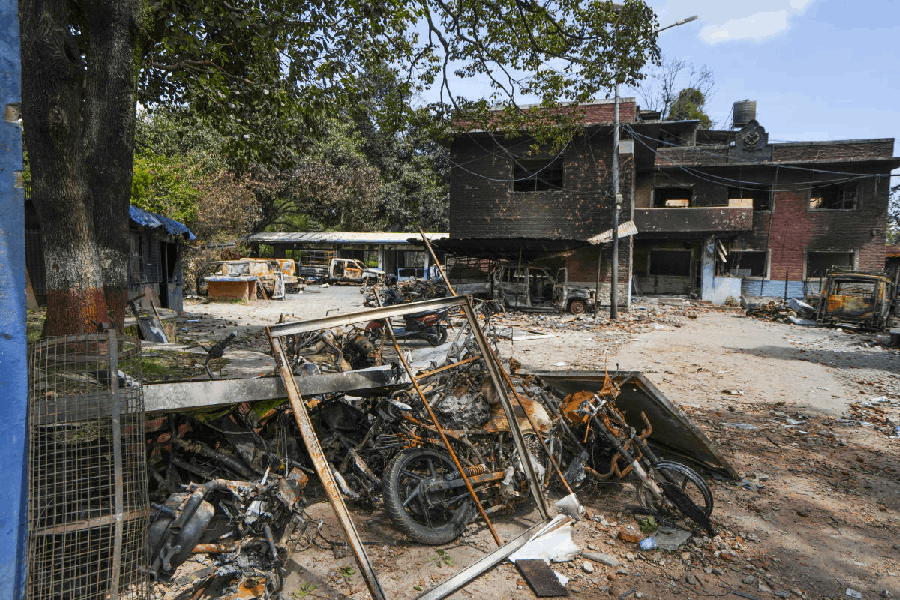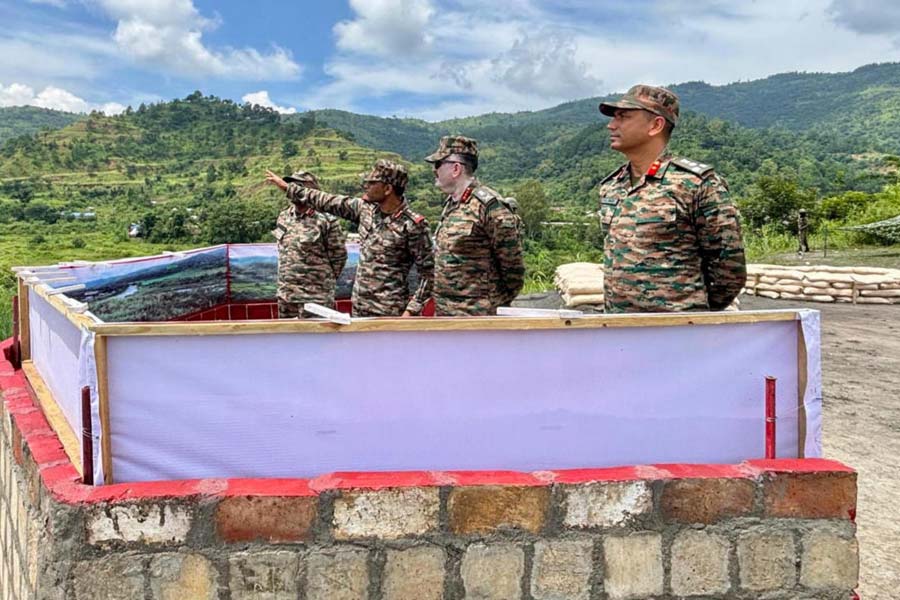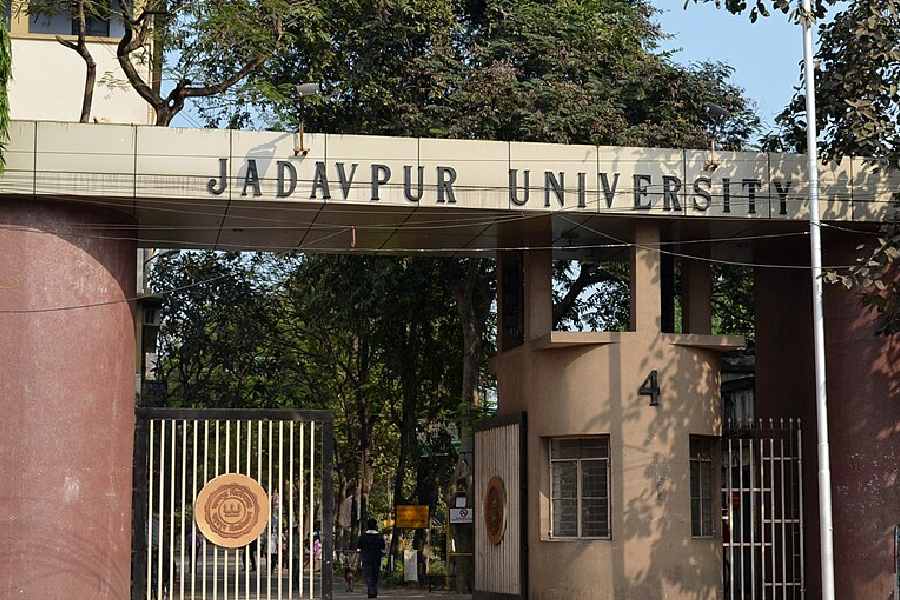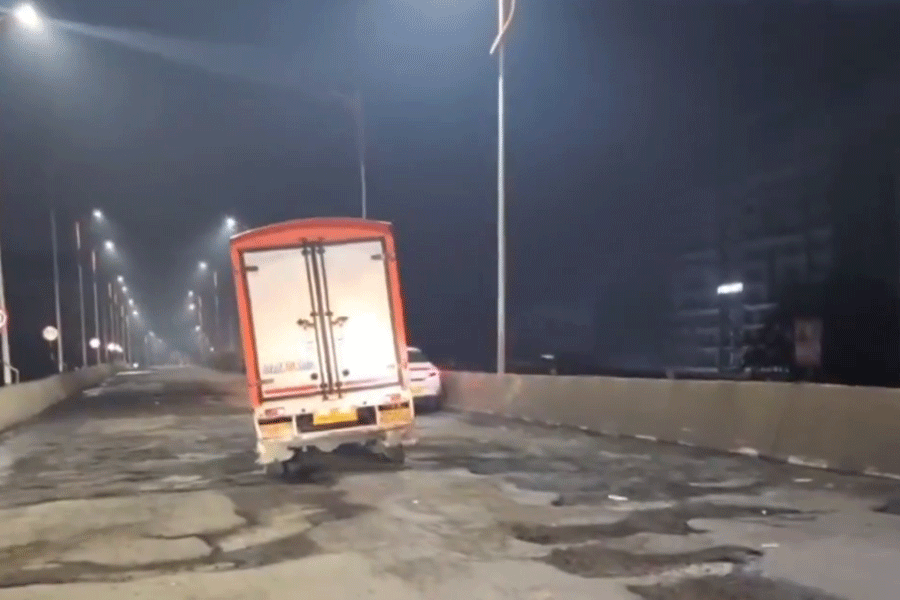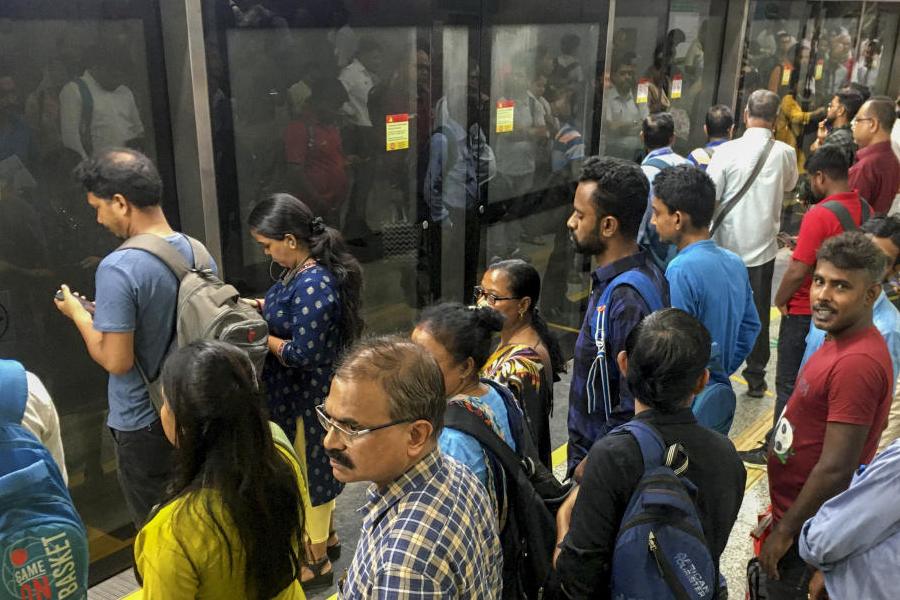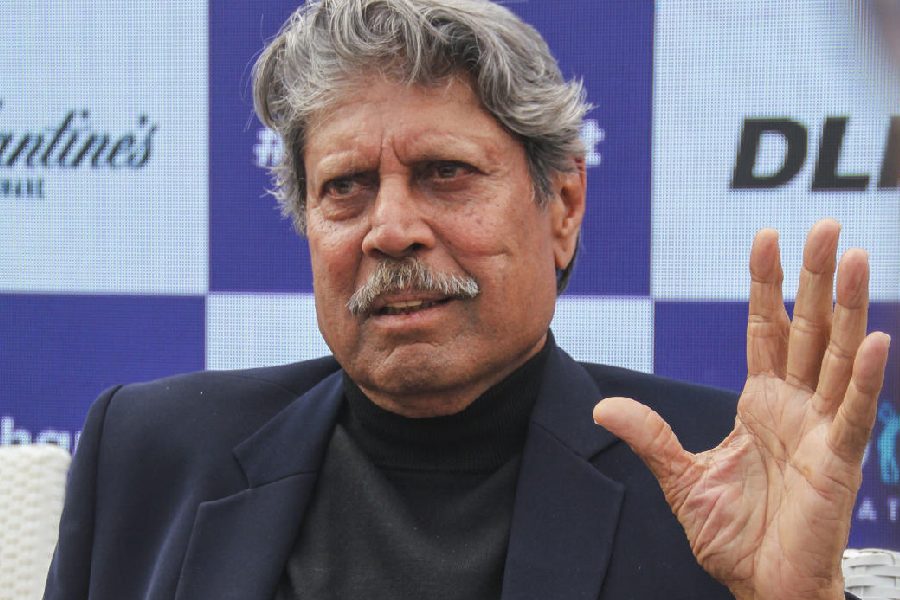 |
| Veer Munshi’s work on display at CIMA’s annual show. Photo: Devi Prasad Sinha |
The 46 works from 31 artists — some known, some new — at CIMA’s annual show indicate an engagement with new gestures, a search for fresh responses.
And one of the new names you notice is that of Nandini Chirimar. But it’s no surprise to learn that she grew up in Rajasthan and trained under Arun Bose in the USA. Like Bose, she seeks, in her etching, to distil the essence of an ethos in architectural terms. The meditative geometry of rectangles and arcs in warm, terracotta reds, recalling local styles, offers no seductive glimpses into dark interiors. Yet it seems there are tales to be teased out of the mute stone.
Taking the human body as a theatre of dumb agony lends the work of Jaya Ganguly a certain testamental validity for our times. The canvas on view even seems to banish the divide between the animate and the inert in a compound of sculpturesque forms, while the insinuation of violence that is understated, even dispassionate, has an unsettling forcefulness. Another artist with a taste for the macabre is Sudeshna Haldar. But her grotesque beings are a recipe for the kind of delicious horror children’s stories evoke, whether in Grimm’s witches or Thakumar Jhuli monsters. Monsters disarmingly endearing because they must turn into victims in the end.
Chandana Hore’s oil is, we learn, in memory of her father, the late Somenath Hore. But even if the context were not known you would still be struck by its dense silence, built up with baritone blues; its defiant aloneness. As though the face on the left wraps the thick paint around itself in a mournful rejection of solace. The figure lying at the bottom postscripts a message: that life’s last journey must be made and made alone.
It’s difficult to say how much the Japanese iwa-enogu technique contributes to Kingshuk Sarkar’s work. But the replication of four huge faces — gaunt and grimly set, in strong colours — while not without the resonance of Warholian rhetoric seems to address the problem of identity and persona in a rivetting image. Identity is, in a sense, the concern of Veer Munshi, too, identity and violence; the violence of displacement, of being uprooted from his native Kashmir; the violence that’s a tool to re-define the Muslim Kashmiri identity.
So pervasive is violence that Shuvaprasanna’s owl — around for some years now — is resurrected as a prophet of apocalypse. In No 31, particularly, the predator of the night is given piercingly blue eyes as it presides regally over a deserted city which makes you wonder whether the artist has Iraq in mind.
But then there are Santanu Maity’s exuberant landscapes in strident yellow and magenta, while Adimoolam’s oil is infectious in the pulsating virility of its brusque smudges in red, blue, yellow and luminous white. However, austerity is the keynote of Y. Deshmukh’s single canvas but it whets the taste for more. Parthapratim Deb, Ramendra Kastha, Jeram Patel and Reshmi Sarkar are some of the other artists to mention. Finally, to find out what masterly brevity can be, there are the watercolours of Jatin Das.
The show’s on till February 3, 2007.


